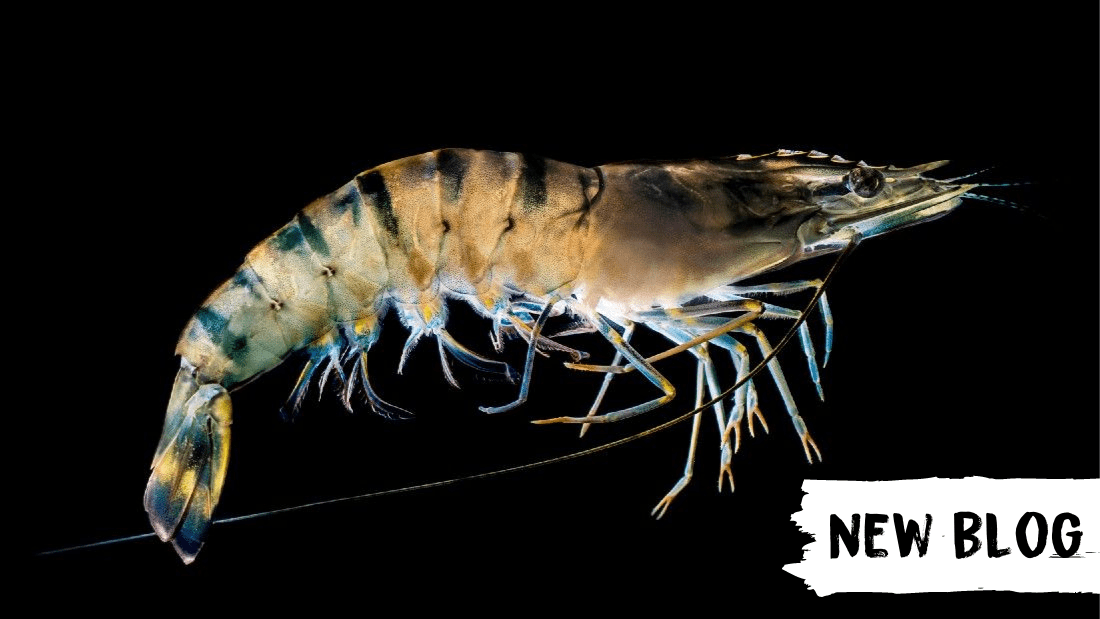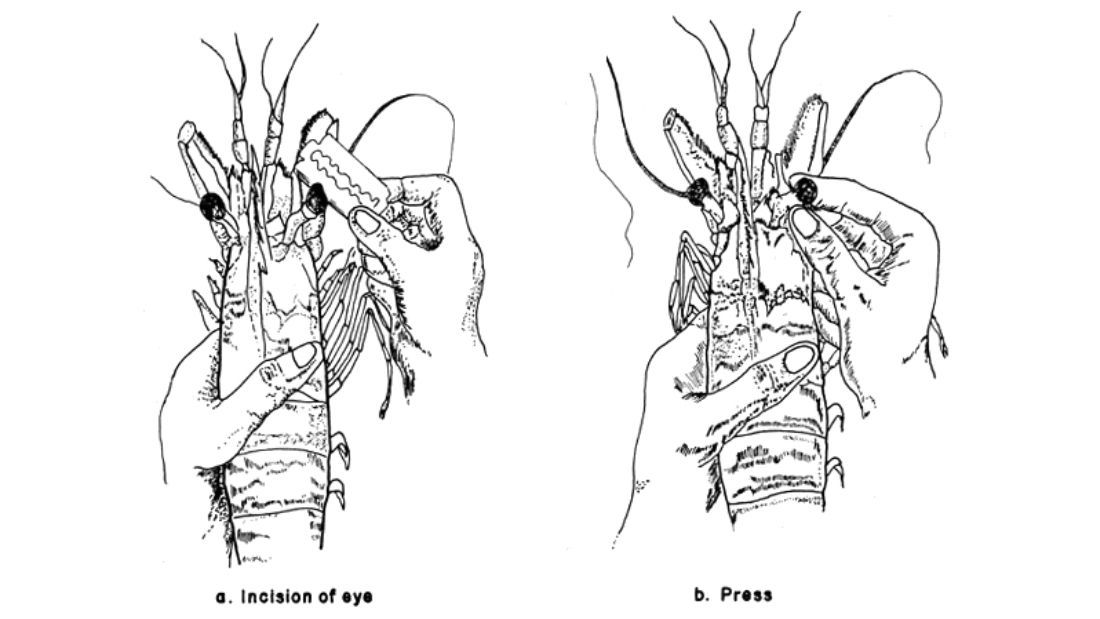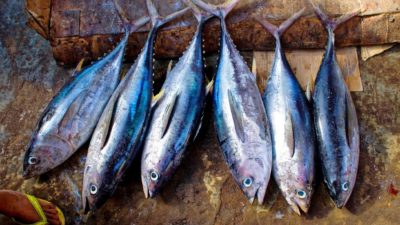Do Prawns and Shrimp Feel Pain?

Search for ‘images of prawns’ on any search engine. Almost everything that comes up will present prawns in the context as something to be eaten. You’ll find them skewered, boiled or fried. It’s hard to find even a single image of a prawn who is alive. It clearly represents the predominant way in which we view prawns and shrimp; not as living creatures, but as food for humans.
This is nothing new. Prawns and shrimp, along with other crustaceans such as crabs and lobsters, have never received much in the way of attention, sympathy or compassion. Perhaps it’s because they look so different to humans, so ‘alien’, because their marine lives are so far removed from anything we can understand, or because they are so small that people assume that they just can’t have much in the way of sentience in their miniscule bodies. Ultimately, a lot of it comes down to the idea that prawns and shrimp don’t feel pain, and therefore their welfare doesn’t matter. That line of thought inevitably ends up with the view that these species are nothing more than food.
The Evolution of Pain
Prawns and shrimp are not legally considered as ‘animals’ in the UK, according to the Animal Welfare Act 2006. As such, they aren’t legally seen as a being that needs a single welfare protection law. So, the real question is – does the complete disregard for prawn and shrimp welfare depend on the science, or on our own assumptions about these small creatures?
Studies have repeatedly shown that aquatic animals such as fish, lobster, prawns and shrimp do feel pain. Evolution has given animals on earth the ability to feel pain as a means of self-preservation. Humans quickly learn that it hurts to get too near fire, and we therefore avoid doing so. Thanks to our pain receptors, we’re better equipped to protect our bodies from potential burns, damaged limbs and other injuries that would put our life at risk. People with congenital insensitivity to pain (CIP), a rare condition in which the afflicted human cannot feel physical pain, commonly die in childhood because their injuries or illnesses go unnoticed until it’s too late. Burn injuries are extremely common because they don’t have that pain telling them to ‘move away!’ We hate the feeling of pain, but that’s exactly why we need it to survive.
The same can be said for any number of animals – pain is a driving factor behind the survival of species. If an animal didn’t feel pain, they wouldn’t do anything when a predator started attacking or eating them. Such animal species wouldn’t last long. From an evolutionary point of view, pain in animals makes absolute sense.
You may still be unconvinced that a tiny animal like a prawn can feel pain. Research show otherwise. In one such study, Glass Prawns had a noxious substance applied to their antennae. The afflicted prawns immediately reacted, grooming their antennae extensively, trying to remove the substance in an attempt to remove the pain. As soon as a local anaesthetic was applied and the pain was removed, they stopped grooming so obsessively, showing that they clearly felt pain and did what they could to alleviate it right up until it was numbed. Researchers found that prawns show signs of pain, in many similar ways to which we do.
Practicing mutilation in reproduction
The majority of prawns consumed in the UK come from farms from South-East Asia. In every single one of these farms, a mutilation is inflicted on the ‘breeding stock’ that manipulates the mating season. Females are forced into an unnatural reproduction cycle as a result.
Prawns have a reproductive gland in their eyes which tells them when it’s the right season to mate. For prawn farmers, they want prawns to breed all year round. So they mutilate the prawns’ eyes by slicing them open with razor blades, tying off the eyestalk with a tight thread, using a red-hot wire or by pinching the eyestalk. These methods crush the reproductive gland which controls the female’s reproduction and essentially force prawns to breed over and over again.
When prawns are inflicted with this horrific mutilation, they constantly rub the traumatised area, they are disoriented, and they flick their tail repeatedly, which is an escape reflex. All three actions are consistent with behaviours in other animals that occur when their pain receptors are activated. The barbaric process of eyestalk ablation blinds the animals, leaving them to drift in crowded, filthy waters, treated as nothing more than a breeding machine.

Do prawns have a central nervous system?
“But prawns don’t have central nervous systems,” you may say in response. “So they can’t feel pain, really.” It is true that prawns don’t have central nervous systems. But Professor Robert Elwood, who has dedicated decades to studying the fascinating lives of crustaceans, dismisses the notion that a central nervous system is the only proof of feeling pain. He says that to deny an animal the ability to “feel pain because they don’t have the same biology [as us] is like denying they can see because they don’t have a visual cortex”.
He’s absolutely right – we can at the very least all agree that prawns have vision. Just because their species have evolved to see with a completely different system to humans, who have a visual cortex, it doesn’t mean they do not see. In the same way, the existence of a central nervous system is not the only way in which an animal can feel pain.
This is understood by the European Food Safety Authority, an independent body that bases its conclusions on scientific research. For over 15 years, the EFSA has been calling for prawns and shrimp to be placed in the same category as animals such as chickens, pigs and sheep, who are understood to feel pain.
So why does this matter?
The UK consumes over 40,000 tonnes of prawns and shrimp every year, equating to hundreds of millions of these animals killed every year. Most of them are farmed, suffer from mutilations and are killed either through asphyxiation or being frozen to death. Others are hauled out of the ocean in huge nets towed by destructive fishing trawlers. Each and every one of these prawns and shrimp feel pain, all for a fleeting taste on the tongue. It’s time we stop the massacre and turn to plant-based alternatives which are kinder, more sustainable and better for us.
Check out 7dayvegan.viva.org.uk to get started on your vegan journey; it has free meal plans for a whole week, nutritional advice and health information to make it as easy as possible to make changes for the planet, people, animals and your health. We also have plenty of fish-free recipes at Vegan Recipe Club to satisfy those cravings!








